accueil site > Paysage et patrimoine > 01. Teaching materials > 04. High School > Re-qualification of the Military Fort of Pian dell’Antro and creation of a (...)
- 01. Fiches pédagogiques
- 01. Teaching materials
-
02. Jardin sans frontière : une école pour développer les compétences -clés en Europe
- 04. Partenaires
- 05. Rencontres transnationales
- 14. À l’école du jardin. Mobilités de formation dans les jardins d’Europe
- 15. À l’école européenne du jardin. Paroles de formateurs sur leurs formations "entre pairs"
- 16. A l’école auropéenne du jardin. Paroles d’apprenants sur leurs mobilités Erasmus+
- 19. Petit glossaire "européen" du jardin
- 20. Dissémination
- 21. Exploitation locale du projet
- 03. Un nouvel Erasmus+ : Le bleu européen comme étendard contre l’exclusion des adultes
-
09. Erasmus+ partenariato
-
Cammini del Blu in Europa
- 01. Incontri transnazionali
- 05. Progetti blu di partners
- 10. Percorsi europei del Blu
- 20. Storie blu
- 40. Disseminazione
- 43. Transcultural Carpet Blue
- 45. Missive blu
- 46. Glossario blu
- 47. Schede didattiche "Pedagogia del colore blu in Europa"
- 48. Illustrazioni delle schede didattiche : Mostra delle opere degli studenti
-
Giardino senza frontiere. Una scuola per lo slivuppo di competenze chiave in Europa
- 04. Partners
- 05. Riunioni transnazionali
- 14. Alla scuola del giardino. Mobilità di formazione nei giardini d’Europa
- 15. Alla scuola del Giardino. Parole di formatori sul loro addestramento "tra pari"
- 16. Alla scuola del giardino. Parole dei discenti sul loro Erasmus + Mobilità
- 19. Piccolo glossario europeo del giardino
-
Cammini del Blu in Europa
-
11. Erasmus+ Partnership
- 01. Transnational Meetings
- 05. Blue Projects of partners
- 07. European roads of the Blue
- 10. Blue stories
- 40. Dissemination
- 43. Transcultural Carpet Blue
- 45. Blue Missives
- 46. Blue Glossary
- 48. Roads of the blue : the file
- 50. Illustrations of the pedagogic file : exhibition of works of learners
-
51. Garden Without Borders : A School for Developing Key Competences in Europe
- 04. Partners
- 05. Transnational meetings
- 14. At Garden School. Training mobilities in the gardens of Europe
- 15. At Garden School. Words of trainers on their "peer-to-peer" training
- 16. At Garden School. Learners’ words about their mobility Erasmus +
- 19. Small European glossary of the garden
- 20. Dissemination
-
11. Partenariats Erasmus+
-
01. Les chemins du bleu en Europe
- 01. Rencontres transnationales
- 05. Projets bleus des partenaires
- 10. Routes du Bleu en Europe ...
- 20. Histoires Bleues
- 40. Dissémination
- 43. Transcultural Carpet Blue
- 45. Missives bleues
- 46. Glossaire bleu
- 47. Formation pédagogique : fiches pédagogiques et référentiel de compétences clés et transversales
- 50. Illustrations des fiches pédagogiques : exposition des travaux des apprenants
-
01. Les chemins du bleu en Europe
- 12. Pedagogic tools
- 17. Fiches pédagogiques
- 17. Schede Pedagogiche
Paysage et patrimoine
Re-qualification of the Military Fort of Pian dell’Antro and creation of a Botanic Garden Venas di Cadore (Belluno)Dolomitesjeudi 26 janvier 2012
 PROJECT
The military fort of Pian dell’Antro in Venas di Cadore (Belluno) is a very interesting and evocative place calling back important historical moments of World War 1, and it is located in a landscape of extreme beauty.
The view is majestic and overlooks the Boite Valley amidst Mounts Antelao, Rite and Pelmo.
PROJECT
The military fort of Pian dell’Antro in Venas di Cadore (Belluno) is a very interesting and evocative place calling back important historical moments of World War 1, and it is located in a landscape of extreme beauty.
The view is majestic and overlooks the Boite Valley amidst Mounts Antelao, Rite and Pelmo.
Subjects involved :
![]() Drawing and relief
Drawing and relief
![]() Photography
Photography
![]() Sciences
Sciences
![]() Theory of the restoration
Theory of the restoration
![]() Design
Design
![]() Visual education
Visual education
Duration of the project : 7 months
Description of the project
Project of recovery of the Military Fort with re-qualification and conversion of the military house and barrack rooms into an environment educational centre and of the battery into a museum and centre of historical documentation. Valorisation of the surrounding area by means of the creation of an alpine botanic garden.
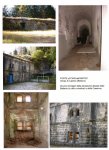 |
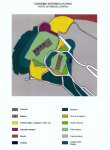 |
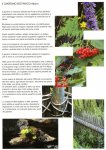 |
General objectives
![]() to favour environment awareness and an ethic of safeguard and valorisation of the environment
to favour environment awareness and an ethic of safeguard and valorisation of the environment
![]() to know the fundamental theories of restoration
to know the fundamental theories of restoration
![]() to know the basics for designing an Alpine Botanic Garden.
to know the basics for designing an Alpine Botanic Garden.
Specific objectives
The hypothesis of this project lies on four specific objectives : a. to recover fully or partially the architectonic structures of the Fort of Pian dell’Antro (house, barracks, battery and underground pathways) b. house and barracks : use the place as a Centre for Environment Education c. battery : use the place as a Centre of Documentation on the history of the Fort d. to revalue the surrounding area by realizing an Alpine Garden.
Competences
![]() to be able to organize instruments, materials and information according to a clear operative methodology
to be able to organize instruments, materials and information according to a clear operative methodology
![]() to be able to apply the knowledge around the theory of restoration to the requirements of the objectives foreseen and to the real typology of the project
to be able to apply the knowledge around the theory of restoration to the requirements of the objectives foreseen and to the real typology of the project
Materials
Graphic and photographic material of study Methodological cards Descriptive leaflet of the project
Methodological phases
The work outline involves three fundamental phases :
![]() analytic phase – study of the environment and of the architectonic structure
analytic phase – study of the environment and of the architectonic structure
![]() phase of critic reflection
phase of critic reflection
![]() phase of synthesis – project proposal
phase of synthesis – project proposal
1.Analytic phase
![]() Analysis of the subject and gathering of the materials useful for the research
Analysis of the subject and gathering of the materials useful for the research
![]() Cartography, maps, old pictures, photographic documentation of the structure, historical documents, etc.
Cartography, maps, old pictures, photographic documentation of the structure, historical documents, etc.
![]() Study of the structure from the architectonic and environmental points of view.
Study of the structure from the architectonic and environmental points of view.
For the alpine botanic garden, reference to the sites :
For the bio-lake, reference to the sites :
For the garden design, reference to the sites : www.archiverde.it
2. Critical reflection
![]() Critical analysis of all the materials collected, reorganization and reflection on the subject.
Critical analysis of all the materials collected, reorganization and reflection on the subject.
3.Synthesis - Operative proposal
![]() Hypothesis of recovery of the house and barracks and of the battery
Hypothesis of recovery of the house and barracks and of the battery
![]() Hypothesis of realization of a botanic garden
Hypothesis of realization of a botanic garden
HYPOTHESIS OF INTERVENTION
Synthesis
The basic idea of the project is to combine history and nature in a recovery project of both the military fort and of the surrounding environment.
The present state of the structure looks seriously jeopardized. The house and barracks are partially destroyed though a large part of the walls are still there and an ample documentation accounts for their original state.
The project of intervention develops along these directions :
![]() recovery of the whole extant building and re-building of the missing parts both as regards the battery and the house and barracks based on the existent photographic documentation ;
recovery of the whole extant building and re-building of the missing parts both as regards the battery and the house and barracks based on the existent photographic documentation ;
![]() restoration of all the underground passageways linking all the blocks and areas of the fort ;
restoration of all the underground passageways linking all the blocks and areas of the fort ;
![]() re-qualification of the green area inside the open area of the fort by means of the realization of a small Alpine Garden.
re-qualification of the green area inside the open area of the fort by means of the realization of a small Alpine Garden.
ALPINE BOTANIC GARDEN and its characteristics
The creation of a small Alpine Botanic Garden will favour the study and the understanding of the territory in its different aspects : botanic, geomorphologic, naturalistic.
The garden will be created inside the area of the fort and will be coherent with the spontaneous, autochthonous vegetation and the landscape thus establishing an image of continuity with the natural environment. By exploiting the conformation of the ground and the distribution of the built up spaces, various natural environments will be realized with an emphasis on the wet areas. Large parts will be destined to the mountain pine. A mountain vegetable garden is also foreseen in a traditional fenced space where seasonal vegetables, flowers and some fruit trees will be grown. Another space will be dedicated to the officinal and aromatic herbs, to the alpine and sub-alpine flora, shrubs and bushes (blackcurrant, blueberry and gooseberry).
ASSESSMENT
The assessment is structured in three phases.
First phase
![]() on-going evaluation and monitoring of the different phases of the project to check its development
on-going evaluation and monitoring of the different phases of the project to check its development
![]() evaluation of the progress as related to the objectives
evaluation of the progress as related to the objectives
Second phase
Evaluation of the final result as related to the objectives
![]() Evaluation of the learning level achieved by the students as related to the subject
Evaluation of the learning level achieved by the students as related to the subject
![]() Evaluation of the grade of knowledge and competencies acquired.
Evaluation of the grade of knowledge and competencies acquired.
Third phase
![]() Evaluation of the operative dynamics of each student and of the group during the different phases
Evaluation of the operative dynamics of each student and of the group during the different phases
![]() Evaluation of the ability of each student to present his/her work or of the group of students
Evaluation of the ability of each student to present his/her work or of the group of students
![]() Evaluation of the level of awareness acquired by the students at the end of the course.
Evaluation of the level of awareness acquired by the students at the end of the course.
Polo Val Boite Cortina d’Ampezzo IT















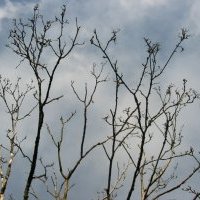
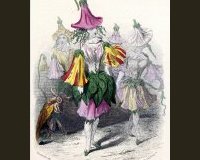
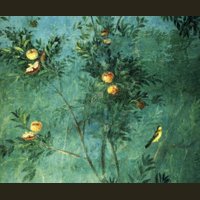
 Version imprimable
Version imprimable